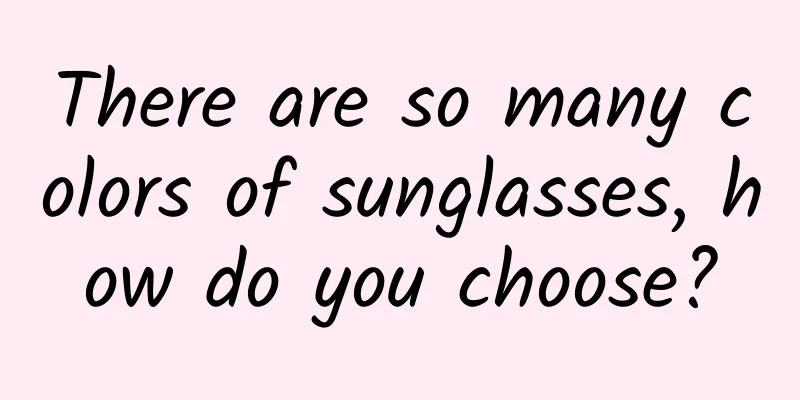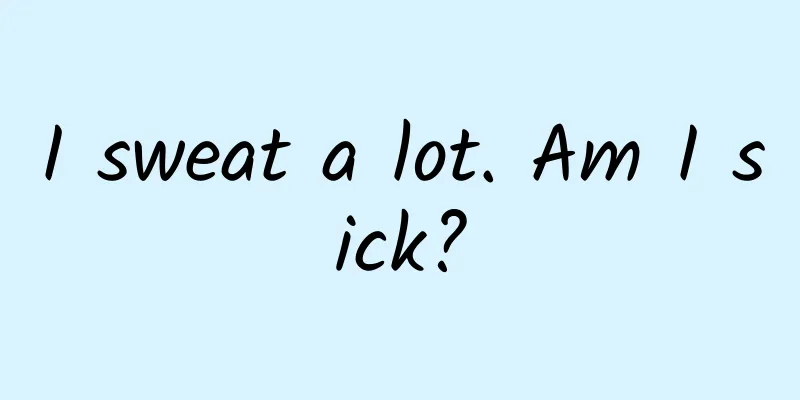There are so many colors of sunglasses, how do you choose?

|
The scorching sun makes it hard to open your eyes. Whether walking or driving, many people cannot do without a pair of sunglasses. As a fashion item, sunglasses are also a tool for many fashionistas to match their clothes and show their taste. Not only are there different shapes, but also colorful colors: in addition to the conventional black, there are caramel, amber, yellow, burgundy, blue, green and even pink... It's really dazzling. A random search on the Internet will show you many guides on styles and matching, but did you know that the color of the lens is also linked to the function? 01 Colorful lenses Hidden doors of various magical powers Sunglasses have different colors and different functions. Knowing the secrets of sunglasses colors will help you protect your eyes better while adding a sense of fashion. Sunglasses come in many colors, and the more common ones are brown, gray, green, yellow, and red. **Brown:**Brown lenses can filter out a lot of blue light, which can improve visual contrast and clarity. They are suitable for wearing in severe air pollution or foggy conditions. Brown lenses reduce brightness while minimizing the distortion of object colors. They can also slightly reduce the halo of blue light, making images clearer while providing glare protection. Brown lenses can block reflected light from smooth and shiny surfaces, allowing people to see fine details even when wearing sunglasses. They are an ideal choice for drivers. Tuchong Creative **Gray series: **Gray lenses filter almost the same amount of sunlight for each color, and can completely absorb infrared rays and 98% of ultraviolet rays. Its biggest advantage is that the original color of the scenery will not be changed by the lens, and it can effectively reduce the intensity of light. **Green series: **Like gray lenses, green series lenses can also effectively absorb infrared rays and 99% of ultraviolet rays. However, green lenses also block the cyan and red in the light, causing the color of the scenery you see to change after passing through the green lenses, and its light blocking effect is slightly lower than that of gray lenses. **Red series: **Red lenses can filter out 95% of ultraviolet rays and some visible light with shorter wavelengths. It is recommended to use them in changeable weather conditions. Tuchong Creative **Yellow lenses: ** can absorb 100% of ultraviolet rays, and allow infrared rays and 83% of visible light to penetrate the lenses. The biggest feature of yellow lenses is that they absorb most of the blue light. When sunlight passes through the atmosphere, it is mainly expressed as blue light (this explains why the sky is blue). After absorbing blue light, yellow lenses can make natural scenery clearer, so they are often used as "filters" and are suitable for light environments in the early morning, dusk or rainy days. **Laser lens: **Suitable for environments with strong sunlight and reflections such as beaches, snow or boats. 02 Polarized filter to eliminate glare Driver's Friend When you go to an optical store or a counter to buy sunglasses, the clerk will often ask: Do you need to choose polarized lenses? What is the difference between polarized lenses and ordinary sunglasses? Tuchong Creative The special effect of polarized lenses is that they can effectively eliminate and filter out scattered light in the light beam. They are recognized worldwide as the most suitable lenses for driving. Polarized lenses are made based on the principle of polarization of light, which can effectively eliminate glare and make the vision clear and natural. This function is similar to the principle of blinds. The light is adjusted to the same direction and enters the room, making the scenery look soft and not dazzling. It should be noted that when putting on and taking off polarized glasses, you should use both hands to hold the temples and put them on and off in a direction parallel to your cheeks. Avoid putting them on and taking them off with one hand, otherwise excessive force can easily cause the frame to deform or even break. When not wearing them, they should be placed in the glasses case and folded, with the mirror facing up. In addition, do not hang polarized glasses on the top of your head, as this can easily damage the hook. Tuchong Creative 03 The magic of smart photochromic lenses How is it done? Photochromic lenses are like the "chameleon" in the family of glasses. They can adjust the color of the lenses according to different temperatures and ambient light, thereby effectively blocking harmful ultraviolet rays to the eyes, reducing glare, and protecting the windows of our souls. So, how does this color magic work? During the manufacturing process of smart photochromic lenses, ultraviolet-sensitive substances, silver halide, and a small amount of copper oxide catalyst are pre-doped. The lens changes from no color to light gray, brown, and then from colored glasses back to ordinary glasses, all of which are "magic tricks" performed by the magician silver halide, and this change process is very similar to the exposure imaging of photographic film: silver halide decomposes when exposed to light and becomes many black silver particles evenly distributed in the lens, making the lens appear dim and blocking the passage of light; but unlike the exposure of photographic film, the silver atoms and halogen atoms generated after the decomposition of silver halide are still tightly together. When returning to a slightly darker place, under the action of copper oxide catalyst, silver and halogen recombine to generate silver halide again, and the lens becomes transparent again. Tuchong Creative Changes in the external environment will also affect the speed and depth of the lens' color change: the stronger the ultraviolet rays, the faster the color change of the photochromic lens, and vice versa; the higher the ambient temperature, the lighter the lens color, and vice versa. However, with the advancement of manufacturing technology, the color change rate of photochromic lenses, especially the fading rate, has been greatly improved, and the interference of temperature on color depth has become less and less. 04 Wear sunglasses like this Good for eyes and glasses Although sunglasses are already a very popular daily necessity, many people have some problems with their wearing habits, which not only shortens the life of the sunglasses but also affects the health of the eyes. Here are a few issues that you must pay attention to when wearing sunglasses: 1. Prevent frame deformation Sunglasses are optical products. If the frame is improperly stressed, it is easy to deform, which not only affects the wearing comfort, but also harms vision and health. Therefore, when wearing glasses, avoid external impact or pressure on the glasses. When wearing glasses, use both hands to gently support the temples on both sides to prevent the frame from deforming due to uneven force on one side, causing the angle and position of the lens to change. If the frame is found to be deformed, go to the optical shop for correction in time. Tuchong Creative 2. Keep the lenses clean Sunglasses need to be cleaned frequently. The specific method is: first drop one or two drops of household detergent on the resin lens to remove dust and dirt on the lens, then rinse it under running water, then use toilet paper to absorb the water droplets on the lens, and finally wipe off the water with a clean and soft lens cloth. 3. Avoid lens scratches At present, the high-quality sunglasses on the market are generally made of resin, which has a low hardness and is easily scratched. If you are not careful and throw the sunglasses around randomly, leaving the convex surface of the resin lens facing down, it will touch hard objects and be rubbed, which will damage the surface of the lens. Therefore, when you are not wearing sunglasses, you must put them in the glasses case, and keep the lenses facing up when temporarily placing them. In addition, resin lenses are not resistant to high temperatures and should be avoided from contact with hot water, and should not be placed in high-temperature places such as the kitchen. Tuchong Creative 4. Wear sunglasses at different times and occasions A big reason why we wear sunglasses is to protect our eyes, but if they are not worn properly, they can also lead to eye diseases. For example, it is not necessary to wear sunglasses on cloudy days and when you are indoors. Some people wear sunglasses regardless of the occasion, regardless of the intensity of the sunlight, even at dusk, evening, when watching movies or TV, which will inevitably increase the burden of eye adjustment, cause eye muscle tension and fatigue, lead to vision loss, blurred vision, and in severe cases, dizziness and other symptoms. Sunglasses are only necessary when you are outdoors in strong sunlight, or when you are swimming or sunbathing on the beach. Do not wear them at other times or occasions unless there is a special need. Tuchong Creative 5. How to prevent sunglasses syndrome Sunglass syndrome refers to long-term wearing of sunglasses, which can cause vision loss and blurred vision. In severe cases, it can cause headaches, dizziness, blurred vision, and inability to see for long periods of time. To prevent sunglasses syndrome, you must choose and use sunglasses correctly. Choose frame glasses with a distance between the pupils that matches your face shape, and try not to wear large sunglasses. When you must wear them, try to shorten the wearing time. After removing them, use your fingers to massage along the eye sockets and both sides of the nose 10-20 times. Once sunglasses syndrome occurs, you should stop wearing sunglasses immediately. If the situation is serious, you need to go to the ophthalmology department of a hospital and seek help from a doctor. Author: Huang Chengchi, attending physician of the optometry clinic of the Fourth Affiliated Hospital of Harbin Medical University Review | Li Hong, Director of Jiamusi University Optometry Center/Director of Jiamusi University Myopia Prevention and Control Research Institute |
<<: Crayfish spend their entire lives trying to prevent fraud
>>: How can two drops of water and a piece of paper generate electricity for one hour?
Recommend
It's time to show real skills. A fake fan's experience of the Hong Kong version of PS4 "FIFA 16"
The 2014 Brazil World Cup has long gone, but the ...
Event operation: coupon distribution strategy design!
1. Write in front It’s time to do some case revie...
The legendary bird is as stable as an old bird? Even a hurricane can't disrupt the flight path of this bird
□ Chen Xiaodong It is the breeding season for Sou...
Xiaohongshu Promotion Method | Is the Grass-Planting List Still Reliable?
A few days ago, Xiaohongshu released a "Litt...
Hiss! Burned by the hot pack again? We did an experiment to reveal the truth about the burns caused by the hot pack!
Every winter, we always see a lot of news about p...
How much food can a person eat at one time?
In recent years, news and eating shows about &quo...
Changing managers has become a habit in the United States. No one can last more than five years and the next one will have a hard time.
According to a recent comprehensive foreign news ...
Why programmers need to grow slowly
I still remember vividly the first time I tried t...
Collisions and mergers between galaxies trigger core activity and emit jets that stretch thousands of light years.
Active galactic nuclei (AGN) play an important ro...
How much does it cost to make the Yongxin Food Mini Program? What is the quotation for the production of Yongxin Food Mini Program?
The mini program provides convenience for publici...
How to prevent the epidemic during the May Day holiday? Please take good care of yourself during this short holiday
Can we still travel during the May Day holiday? W...
As a continuity technology, what problems can 5G solve?
The 4G construction of the three major domestic o...
Traffic is becoming more and more expensive. How can we achieve high conversions with a low budget?
I guess everyone has been bidding for some time. ...
How much does it cost to build an app platform?
We have mentioned before why more and more people...
Top 10 keywords for website navigation in 2015
1. Polarization <p class="MsoListParagraph" st...









